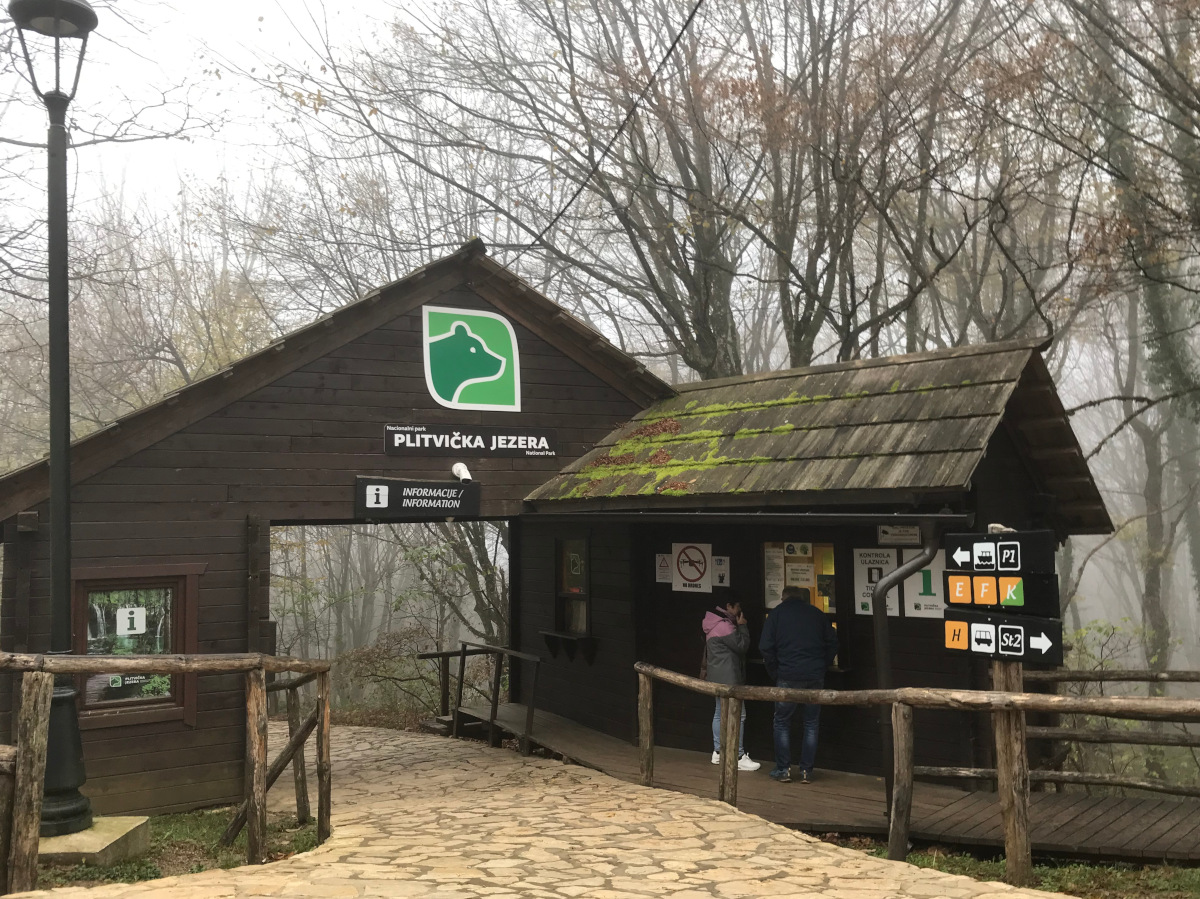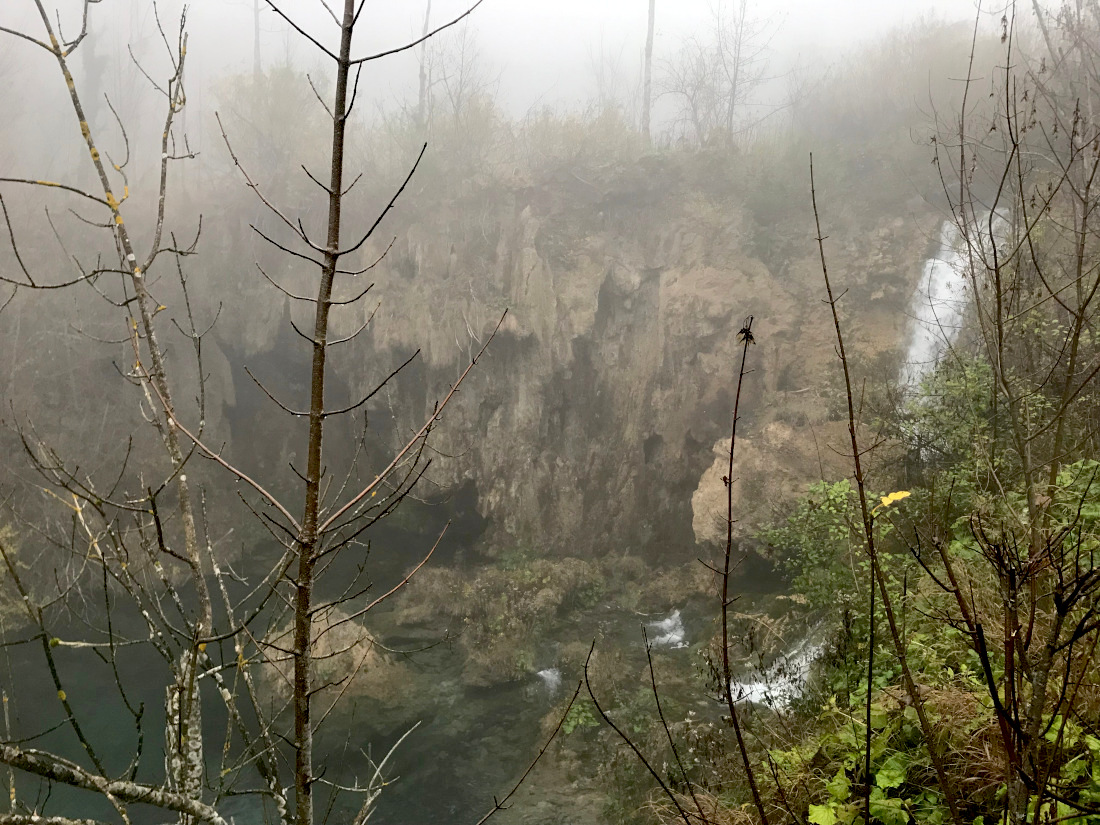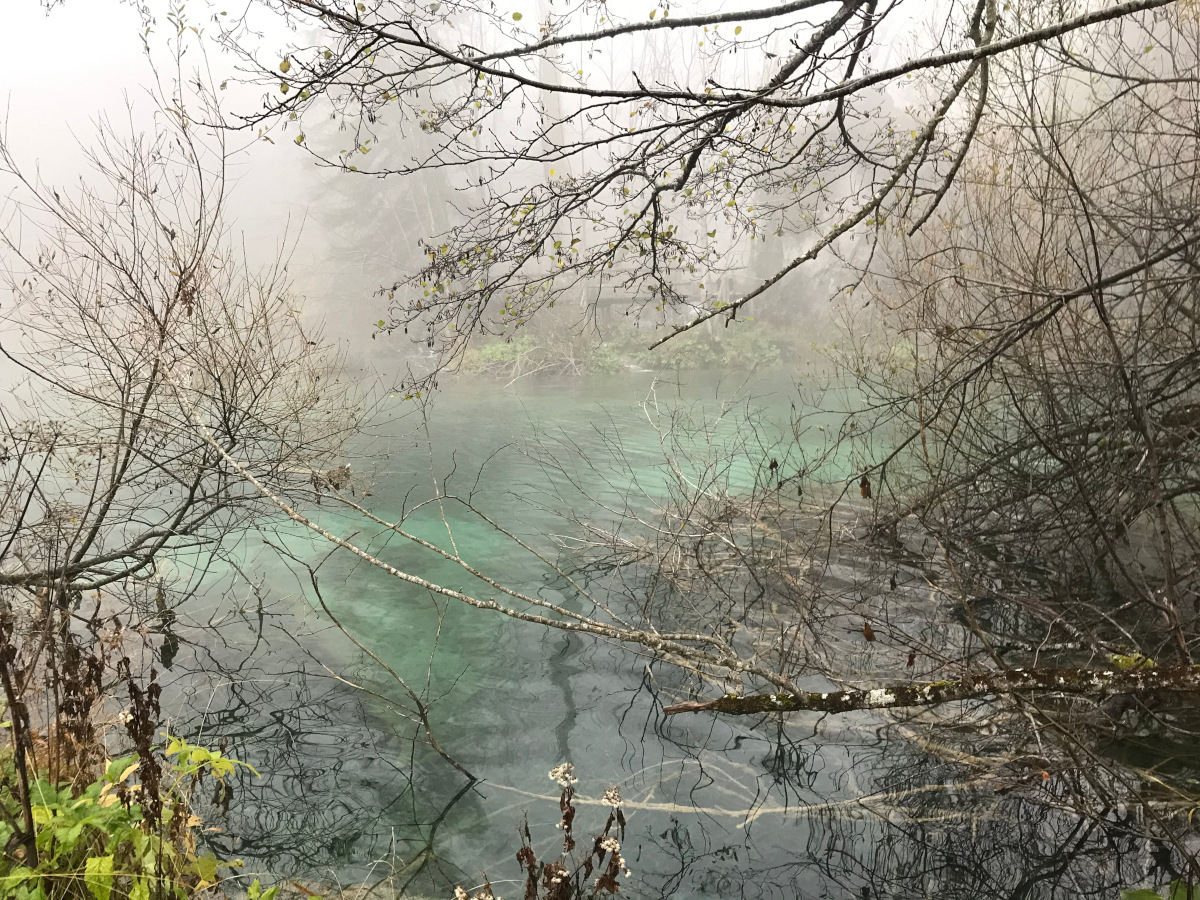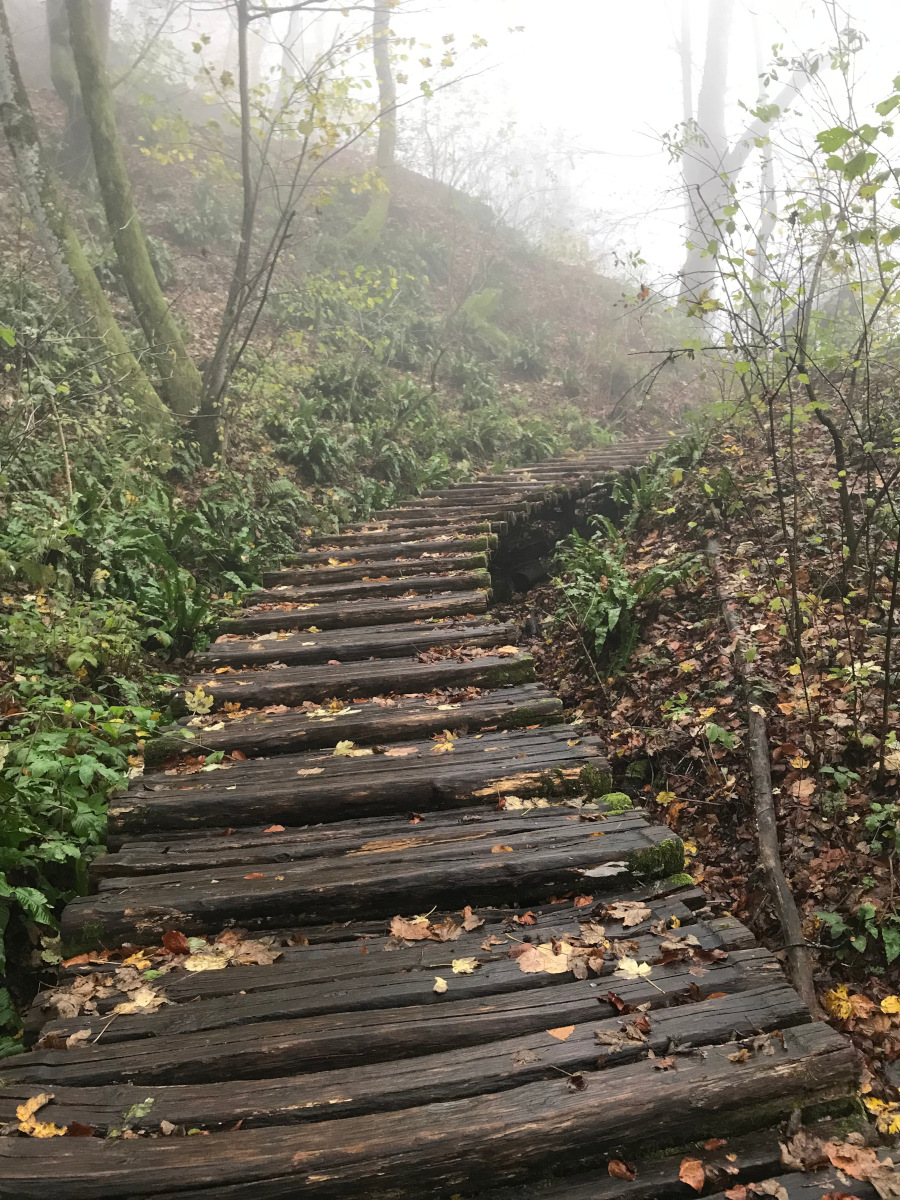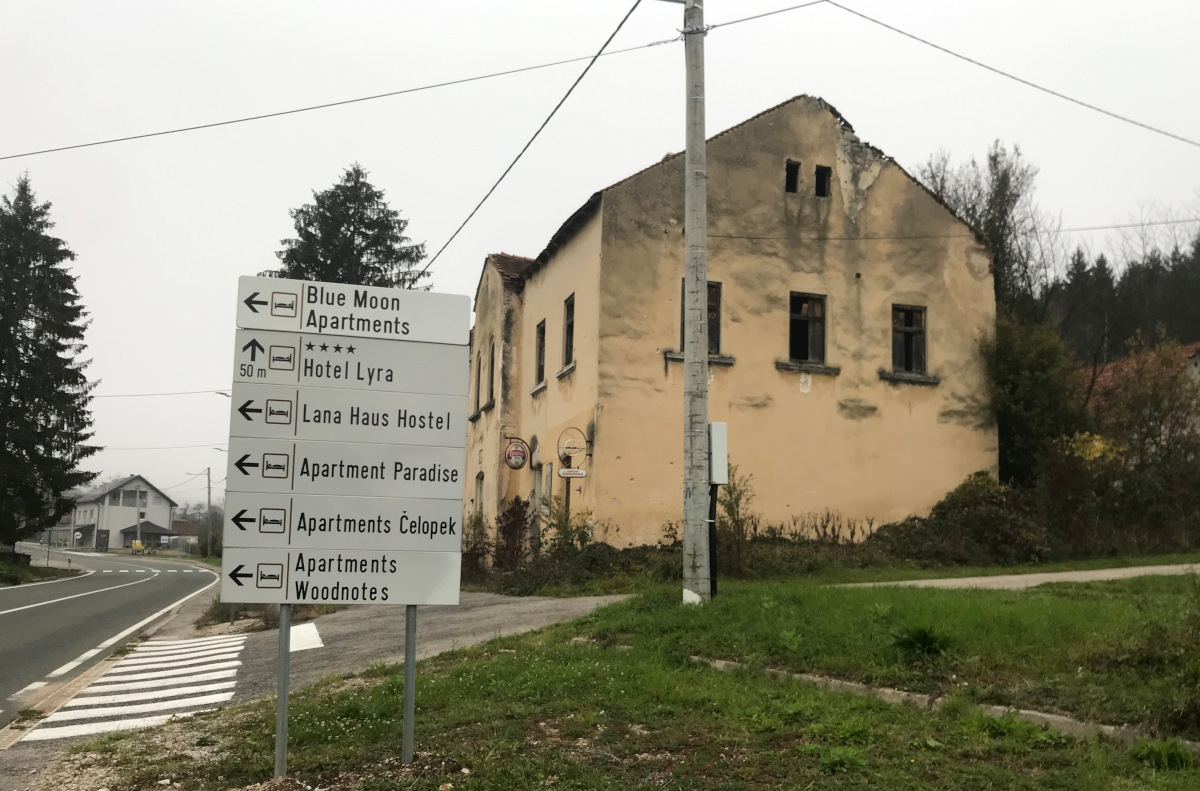Plitvice: the care of a park
A UNESCO World Heritage Site since 1979, the Plitvice Lakes Park located in Croatia on the border with Bosnia Herzegovina, with its 300 sq km of surface area, is an exceptional European natural area. The biodiversity of its habitats and its overall ecosystem need constant protection interventions. A reportage
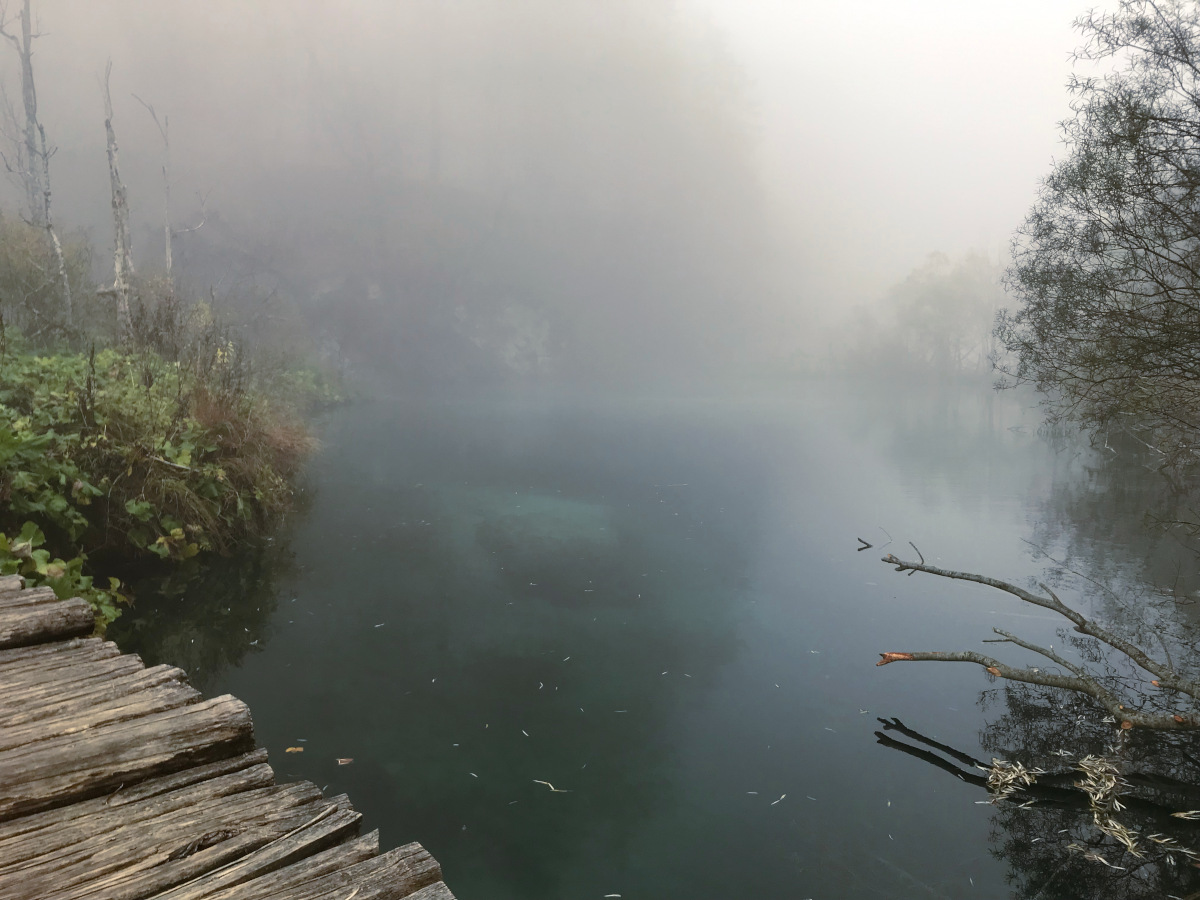
Plitvice-la-cura-di-un-parco
Plitvice lake in the fog - N.Corritore
Travelling in autumn along the road that cuts through Istria from Trieste, and after Rijeka runs along the sea as far as Senj, looks like entering a world where time has stopped. Few cars, despite the mild climate and the high temperatures of this strange autumn, semi-deserted villages, empty houses and small hotels await the tourist tide of next summer. Going uthe winding road that leads from Senj to the Vratnik pass overlooking the Adriatic Sea, you enter the realm of vast spaces: in the wide plateau that you cross before arriving in Plitvice, sparse houses and free horses grazing next to cows, sheep, and hens.
The Plitvice Lakes Natural Park looks very different than when it was visited by thousands of tourists in the summer. The fog is one with the dense silence of the water flowing along the streams and the roar of the ubiquitous waterfalls.
Sandwiched between the Mala Kapela mountain range in the west and northwest and the Licka Pljesivica in the southeast, it remains open all year round. Incredibly crowded in summer, in winter it empties, dresses in white, and the low temperatures transform the waterfalls into elegant works of ice. Yet in recent years – as explains Jasmina, the park guide who accompanies me – the average rise in temperatures has reduced the period of intense cold.
Jasmina’s story along the 5 hour walk and a short boat ride adds much to what is found in the tourist brochures. Many anecdotes, but also information on the problems faced by this exceptional natural area, which became a UNESCO World Heritage Site on 26 October 1979.
First of all, due to the drop in water level: in some points of the main lakes – among the approximately 80 recently counted by a study with the use of satellite images – we are witnessing the death of the sedra, tuff. And, as explained on the Park’s website, it is precisely the particular process of development of the tuffaceous barriers which, by dividing the original river valley, created the conditions for the formation of the lakes.
Tuff is a porous rock that arises from the sedimentation of calcium carbonate dissolved in water with the help of plants, algae, and mosses. The drop in the water level blocks the sedimentation process and then, without algae and moss, the tuff dries up and disintegrates. That is why, says Jasmina, one of the 16 main lakes no longer exists and in some parts of the park you can see dry tuff walls and small collapses.
However, the drop in the water level, says Jasmina, cannot be justified only by the decrease in rainfall and snowfall. It is thought, but this will only be understood at the conclusion of some ongoing research, that the earthquakes of recent years have opened a deep hole. Research is urgent to safeguard tuff formations that are mostly 6-7,000 years old, therefore born after the last glaciation, but some even much older as emerged in recent analyses, as the Park’s website mentions: “…which show an age between 250,000 and 300,000 years (Mindel-Riss interglacial period) and an age between 90,000 and 130,000 years (Riss-Wurm interglacial period)”.
Various projects financed with European funds have been dedicated to the protection of the park, including the fauna and flora of the surrounding woods – the lakes, in fact, make up only 1% of the park’s almost 300 sq km surface area. One of the most recent, which held a meeting at the end of September in the municipality of Plitvice, is part of the Razvoj okvira za upravljanje ekološkom mrežom Natura 2000 (Development of the framework for the management of the Natura 2000 ecological network) launched by Croatian government in 2017 with EU co-financing under the cohesion policy 2014-2020.
The project envisages the development of a plan for the large natural areas of the country – including Plitvice – in order to effectively manage forest ecosystems and create new protection programmes as well as sustainable development. As part of the project, the interactive map "Bioportal" of all natural and protected areas in Croatia was also created in 2019 and is being updated gradually.
In recent years – Jasmina explains to me during our walk – many changes have been taking place in the fauna. She bends down and shows the underside of the bark of a beech tree. For some time now, beavers have reappeared, attacking the bark of these trees, causing their death. A problem still without solution, as the beaver is a protected species. Another issue – adds the guide – are lynxes. Years ago there was the arrival of non-native lynx. This led to a disease of the teeth which killed the local ones. A re-population operation with healthy lynx has recently started and it is hoped that this will lead to an increase in their presence.
In the park there are also other large carnivores such as bears and wolves. There are about thirty bears and when new ones are born, a collar with GPS is applied to them to trace their movements and life habits. Of wolves, on the other hand, there are six packs, whose behaviors have however recently changed. “Each pack – explains Jasmina – usually moves in well-defined areas on the Licka Pljesivica mountain on the border with Bosnia and Herzegovina. But since 2016 the constant and intense passage of migrants and border police in those woods has driven them further south".
As regards the fish fauna, last year the activity was finally launched to free the lakes from alien fish [any living species which, due to the action of man, finds itself inhabiting and colonising a territory different from its historical range] including predatory fish, which had been brought here in the decades when fishing was still allowed and which negatively affected the local fauna.
The task was assigned to a group of Park experts in collaboration with the Zoological Institute of the Faculty of Science and Mathematics of Zagreb and the Aquatika project partners (Karlovac Aquarium): for a few days each month they remove foreign species (chub, pike, and rainbow trout) from one of the lakes of the upper area, the Proscan, and in adjacent streams. The catch is transported to Zagreb and used as food for the zoo animals. The objective of the project is to start restoring the natural state of the waters and the native fish population by 2022.
These protection operations must also take into consideration the enormous annual influx of tourists. The first year the National Park was opened, in 1949, there had been a thousand visitors. In 2019, the year before the collapse in attendance due to the emergency measures of the Covid-19 pandemic, they reached two million. This is why, Jasmina announces, there are plans to add a third entrance to distribute the arrivals of tourists over a wider area.
The tourist flow is so intense that the wooden walkways that run for kilometres around the many lakes and ponds of the National Park must be replaced at least every eight years. A heavy job, as the workers carry support logs and planks on their shoulders from the landing points of the ferries or the internal train up to the place where they are fixed together.
This adds up to the constant maintenance work on the tens of kilometres of paths that extend along the entire wooded area of the park.
Tourism is both national and international, comes from European countries – including those of the Balkan peninsula – and from outside Europe. Also for weddings, as it used to be in the past. In fact, I learn from Jasmina that from 1968 to 1988, every year and in the month of May, an international initiative organised by national and local institutions took place which provided for the holding of a collective wedding on the esplanade below the Veliki slap (the major waterfall).
In the participating foreign countries, a competition was organised with photos of the candidate couples and the public voted for the one that would represent their country at the initiative in Yugoslavia. After the wedding, all the spouses stayed in Plitvice Park for a week, welcomed in houses built especially for them. Thus 177 couples got married. Even today the park is a place for weddings, the last one a few days ago, but in private and no longer as they did before the war. A war that Jasmina mentions only occasionally, telling me, almost apologetic, that she does not like to talk about it because she lived it as a child.
However, the signs are still visible, just a few minutes away by car, in a landscape in total contrast with the beauty of the park which was only partially marked by the conflict, also because during the war it was used as a base for the UNCRO, i.e. the mission of peace of the United Nations in Croatia. Despite the thick fog, along the 20 km that from Plitvice, through Licko Petrovo Selo, lead to the border with Bosnia and Herzegovina, in Izacic, among the renovated or newly built houses offering rooms for rent, it is impossible not to see the rubble wrapped in the bush and abandoned buildings, windowless and scarred with artillery holes.
This content is published in the context of the “Work4Future” project co-financed by the European Union (EU). The EU is in no way responsible for the information or views expressed within the framework of the project. The responsibility for the contents lies solely with OBC Transeuropa. Go to the “Work4Future“
Tag: Work for Future
Featured articles
- Take part in the survey
Plitvice: the care of a park
A UNESCO World Heritage Site since 1979, the Plitvice Lakes Park located in Croatia on the border with Bosnia Herzegovina, with its 300 sq km of surface area, is an exceptional European natural area. The biodiversity of its habitats and its overall ecosystem need constant protection interventions. A reportage

Plitvice-la-cura-di-un-parco
Plitvice lake in the fog - N.Corritore
Travelling in autumn along the road that cuts through Istria from Trieste, and after Rijeka runs along the sea as far as Senj, looks like entering a world where time has stopped. Few cars, despite the mild climate and the high temperatures of this strange autumn, semi-deserted villages, empty houses and small hotels await the tourist tide of next summer. Going uthe winding road that leads from Senj to the Vratnik pass overlooking the Adriatic Sea, you enter the realm of vast spaces: in the wide plateau that you cross before arriving in Plitvice, sparse houses and free horses grazing next to cows, sheep, and hens.
The Plitvice Lakes Natural Park looks very different than when it was visited by thousands of tourists in the summer. The fog is one with the dense silence of the water flowing along the streams and the roar of the ubiquitous waterfalls.
Sandwiched between the Mala Kapela mountain range in the west and northwest and the Licka Pljesivica in the southeast, it remains open all year round. Incredibly crowded in summer, in winter it empties, dresses in white, and the low temperatures transform the waterfalls into elegant works of ice. Yet in recent years – as explains Jasmina, the park guide who accompanies me – the average rise in temperatures has reduced the period of intense cold.
Jasmina’s story along the 5 hour walk and a short boat ride adds much to what is found in the tourist brochures. Many anecdotes, but also information on the problems faced by this exceptional natural area, which became a UNESCO World Heritage Site on 26 October 1979.
First of all, due to the drop in water level: in some points of the main lakes – among the approximately 80 recently counted by a study with the use of satellite images – we are witnessing the death of the sedra, tuff. And, as explained on the Park’s website, it is precisely the particular process of development of the tuffaceous barriers which, by dividing the original river valley, created the conditions for the formation of the lakes.
Tuff is a porous rock that arises from the sedimentation of calcium carbonate dissolved in water with the help of plants, algae, and mosses. The drop in the water level blocks the sedimentation process and then, without algae and moss, the tuff dries up and disintegrates. That is why, says Jasmina, one of the 16 main lakes no longer exists and in some parts of the park you can see dry tuff walls and small collapses.
However, the drop in the water level, says Jasmina, cannot be justified only by the decrease in rainfall and snowfall. It is thought, but this will only be understood at the conclusion of some ongoing research, that the earthquakes of recent years have opened a deep hole. Research is urgent to safeguard tuff formations that are mostly 6-7,000 years old, therefore born after the last glaciation, but some even much older as emerged in recent analyses, as the Park’s website mentions: “…which show an age between 250,000 and 300,000 years (Mindel-Riss interglacial period) and an age between 90,000 and 130,000 years (Riss-Wurm interglacial period)”.
Various projects financed with European funds have been dedicated to the protection of the park, including the fauna and flora of the surrounding woods – the lakes, in fact, make up only 1% of the park’s almost 300 sq km surface area. One of the most recent, which held a meeting at the end of September in the municipality of Plitvice, is part of the Razvoj okvira za upravljanje ekološkom mrežom Natura 2000 (Development of the framework for the management of the Natura 2000 ecological network) launched by Croatian government in 2017 with EU co-financing under the cohesion policy 2014-2020.
The project envisages the development of a plan for the large natural areas of the country – including Plitvice – in order to effectively manage forest ecosystems and create new protection programmes as well as sustainable development. As part of the project, the interactive map "Bioportal" of all natural and protected areas in Croatia was also created in 2019 and is being updated gradually.
In recent years – Jasmina explains to me during our walk – many changes have been taking place in the fauna. She bends down and shows the underside of the bark of a beech tree. For some time now, beavers have reappeared, attacking the bark of these trees, causing their death. A problem still without solution, as the beaver is a protected species. Another issue – adds the guide – are lynxes. Years ago there was the arrival of non-native lynx. This led to a disease of the teeth which killed the local ones. A re-population operation with healthy lynx has recently started and it is hoped that this will lead to an increase in their presence.
In the park there are also other large carnivores such as bears and wolves. There are about thirty bears and when new ones are born, a collar with GPS is applied to them to trace their movements and life habits. Of wolves, on the other hand, there are six packs, whose behaviors have however recently changed. “Each pack – explains Jasmina – usually moves in well-defined areas on the Licka Pljesivica mountain on the border with Bosnia and Herzegovina. But since 2016 the constant and intense passage of migrants and border police in those woods has driven them further south".
As regards the fish fauna, last year the activity was finally launched to free the lakes from alien fish [any living species which, due to the action of man, finds itself inhabiting and colonising a territory different from its historical range] including predatory fish, which had been brought here in the decades when fishing was still allowed and which negatively affected the local fauna.
The task was assigned to a group of Park experts in collaboration with the Zoological Institute of the Faculty of Science and Mathematics of Zagreb and the Aquatika project partners (Karlovac Aquarium): for a few days each month they remove foreign species (chub, pike, and rainbow trout) from one of the lakes of the upper area, the Proscan, and in adjacent streams. The catch is transported to Zagreb and used as food for the zoo animals. The objective of the project is to start restoring the natural state of the waters and the native fish population by 2022.
These protection operations must also take into consideration the enormous annual influx of tourists. The first year the National Park was opened, in 1949, there had been a thousand visitors. In 2019, the year before the collapse in attendance due to the emergency measures of the Covid-19 pandemic, they reached two million. This is why, Jasmina announces, there are plans to add a third entrance to distribute the arrivals of tourists over a wider area.
The tourist flow is so intense that the wooden walkways that run for kilometres around the many lakes and ponds of the National Park must be replaced at least every eight years. A heavy job, as the workers carry support logs and planks on their shoulders from the landing points of the ferries or the internal train up to the place where they are fixed together.
This adds up to the constant maintenance work on the tens of kilometres of paths that extend along the entire wooded area of the park.
Tourism is both national and international, comes from European countries – including those of the Balkan peninsula – and from outside Europe. Also for weddings, as it used to be in the past. In fact, I learn from Jasmina that from 1968 to 1988, every year and in the month of May, an international initiative organised by national and local institutions took place which provided for the holding of a collective wedding on the esplanade below the Veliki slap (the major waterfall).
In the participating foreign countries, a competition was organised with photos of the candidate couples and the public voted for the one that would represent their country at the initiative in Yugoslavia. After the wedding, all the spouses stayed in Plitvice Park for a week, welcomed in houses built especially for them. Thus 177 couples got married. Even today the park is a place for weddings, the last one a few days ago, but in private and no longer as they did before the war. A war that Jasmina mentions only occasionally, telling me, almost apologetic, that she does not like to talk about it because she lived it as a child.
However, the signs are still visible, just a few minutes away by car, in a landscape in total contrast with the beauty of the park which was only partially marked by the conflict, also because during the war it was used as a base for the UNCRO, i.e. the mission of peace of the United Nations in Croatia. Despite the thick fog, along the 20 km that from Plitvice, through Licko Petrovo Selo, lead to the border with Bosnia and Herzegovina, in Izacic, among the renovated or newly built houses offering rooms for rent, it is impossible not to see the rubble wrapped in the bush and abandoned buildings, windowless and scarred with artillery holes.
This content is published in the context of the “Work4Future” project co-financed by the European Union (EU). The EU is in no way responsible for the information or views expressed within the framework of the project. The responsibility for the contents lies solely with OBC Transeuropa. Go to the “Work4Future“
Tag: Work for Future

